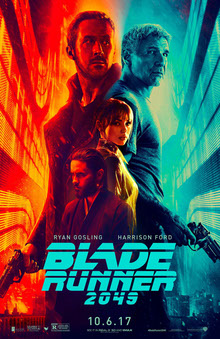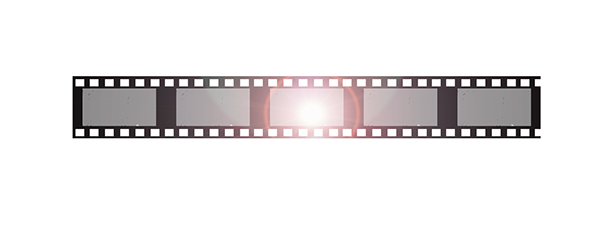 Being a film fan is often a frustrating experience, particularly in the present climate of remake-boot madness that has swept through the studios. Having loved a film or series for potentially decades only to see a half-baked, rushed out the door, in-name-only successor besmirch its name can be disappointing. This is especially true when it comes to established classics, the likes of “Ben-Hur” or “Ghostbusters” standing as recent testament to the short sighted, cash grabs we all now expect from this kind of endeavour. It hasn’t always been the case that a remake would be bad, even as recent as 2004 with Zack Snyder’s “Dawn of the Dead” or even the 2010 Coen Brothers “True Grit” remake being good in their own right. Further back in the 80’s, we had David Cronenberg remake a classic in the form of “The Fly” and John Carpenter with “The Thing” which became classics themselves.
Being a film fan is often a frustrating experience, particularly in the present climate of remake-boot madness that has swept through the studios. Having loved a film or series for potentially decades only to see a half-baked, rushed out the door, in-name-only successor besmirch its name can be disappointing. This is especially true when it comes to established classics, the likes of “Ben-Hur” or “Ghostbusters” standing as recent testament to the short sighted, cash grabs we all now expect from this kind of endeavour. It hasn’t always been the case that a remake would be bad, even as recent as 2004 with Zack Snyder’s “Dawn of the Dead” or even the 2010 Coen Brothers “True Grit” remake being good in their own right. Further back in the 80’s, we had David Cronenberg remake a classic in the form of “The Fly” and John Carpenter with “The Thing” which became classics themselves.
There are some classics that (so far, thankfully) the studio machine hasn’t dared to touch – The Godfather, Citizen Kane spring to mind – and many would have put Ridley Scott’s hugely influential Bladerunner on that list of untouchables. When a sequel was lined up it took many by surprise particularly when word was that the star, writer and director of Bladerunner were to be involved in the project. Harrison Ford would be returning as Deckard, Hampton Fancher would be given the writing duties and Scott himself would take up an Executive Producer role. The directing duties were picked up by Canadian Denis Villeneuve who has previous impressed in “Sicario” and “Arrival”, with renowned cinematographer Roger Deakins (Shawshank Redemption, Skyfall) by his side. The new major additions to the on-screen cast were Ryan Gosling as the lead, Robin Wright as his boss and Jared Leto as the corporate overlord in charge of producing new Replicants. As the aim of the marketing was to be largely secretive around plot details, here to shall those details be absent. Sufficed to say, Gosling plays a new model Replicant that is itself a Blade Runner, going out to “retire” the older models before getting on the trail of something more than an ordinary case.
 Based on the Phillip K. Dick novel “Do Androids Dream of Electric Sheep?”, the first Bladerunner took place in a future of Earth that saw humanity create androids/replicants to take up the hard labour instead of humans. This work force allowed humans to colonise other planets but also saw the replicants develop, seemingly, a sense of self and begin loathing the oppression of forced labour, ultimately rebelling. The androids were extremely human in look and behaviour and required a particular detective to identify them, those detectives were Bladerunners. Scott’s film plays out like a classic noir detective story but with futuristic designs and technology, following Ford as Deckard investigating a group a replicants who stole a ship, returned to earth and are themselves searching for their creator. It’s a slow paced, deliberate detective story with some of what are now Scott’s trademarked visual beauty. In fact, it was 25 years after the film was released in theatres that Scott finally pieced together his “Final Cut” which cleared up small film-making errors that had plagued him – corrected lines of dialogue here and there, as well as some technology assisted painting over of cracks, such as better hiding stunt people. Most significant of the improvements is the actual picture quality itself, scanned painstaking frame by frame in ultra-high resolution further highlight the visual excellence that Scott was able to capture on screen.
Based on the Phillip K. Dick novel “Do Androids Dream of Electric Sheep?”, the first Bladerunner took place in a future of Earth that saw humanity create androids/replicants to take up the hard labour instead of humans. This work force allowed humans to colonise other planets but also saw the replicants develop, seemingly, a sense of self and begin loathing the oppression of forced labour, ultimately rebelling. The androids were extremely human in look and behaviour and required a particular detective to identify them, those detectives were Bladerunners. Scott’s film plays out like a classic noir detective story but with futuristic designs and technology, following Ford as Deckard investigating a group a replicants who stole a ship, returned to earth and are themselves searching for their creator. It’s a slow paced, deliberate detective story with some of what are now Scott’s trademarked visual beauty. In fact, it was 25 years after the film was released in theatres that Scott finally pieced together his “Final Cut” which cleared up small film-making errors that had plagued him – corrected lines of dialogue here and there, as well as some technology assisted painting over of cracks, such as better hiding stunt people. Most significant of the improvements is the actual picture quality itself, scanned painstaking frame by frame in ultra-high resolution further highlight the visual excellence that Scott was able to capture on screen.
All of this to say, Blade Runner is a fully living world unto itself. It is rightly revered by many for its thought provoking story and characters, and its immense visual creation. Any follow up is going to have a lot to live up to in its style to feel like it is related to the Scott original. In the respect of achieving the visuals necessary, it is almost without question that the pair of Villeneuve and Deakins did everything in their power to make every frame gorgeous. As little CGI was utilised as possible, only to enhance the wider, establishing shots which combined with extensive practical sets give the world a real grounding. Villeneuve was also successful in matching the pace of its predecessor, if not unavoidably more streamlined. It could be accused, potentially, of indulging in some of its own grandeur at times, extending shots or sequences longer than needed but it is not to the overall detriment of the film. As with the recent Alien: Covenant, there is a obviously difference in how the technology in the future looks compared to their 80’s counterparts. The tech has been streamlined and smoothed out but in 2049 feels like a logical evolution of what we had seen before. The skyline of pollution and shooting flames has been replaced by endless fields of solar panelling, Los Angeles has become a compacted, plain favela style city but the inner city maintains the neon grime of the original. The practical sets feel a little too clean cut at times, but others are staggeringly gorgeous to look at.
Aesthetically, 2049 could be gushed about endlessly but in the interest of time and word count it is easier, perhaps, to say that it is the frontrunner for best looking film of the year by some distance. Performance wise everybody delivers a more than solid performance – Gosling ably captures both the stoic nature one expects from an android and the more complex emotions offered by his improved hard/software. Robin Wright delivers a typically great performance as his superior officer/friend surrogate in the police. She has both the presence and tenderness required to convince in her role. Naturally, the most anticipated character in the film is Harrison Ford – on his late career sequel tour, he continues to return to his real acting of 10 or 20 years ago. Gone is the monotone grumble of Indy 4 and some previous films, replaced with an invested performance like that in Force Awakens. Jared Leto has minimal screen time but convinces despite being lumbered with some unapologetic exposition and world building.
Narratively, 2049 tries to create the same kind of following the clues style of other noirs, starting with Gosling simply on the job before being pulled in to a bigger story. It could be accused towards the latter stages of holding the audiences hand too much, showing flashbacks or dreams of things from earlier to give context to an event or revelation. This removes the kind of ambiguous implications that Scott’s film left lingering but does offer a few surprises of its own. The film permitted itself a nice window of vaguery around the developments in the interim narrative years by alluding to some event that resulted in digital records being lost to time. With this they can maintain focus on the narrative at hand, dripping the information through as best suited. The film continues the philosophical meta-discussion of what constitutes a life in almost every story strand, with holograms, Gosling and more all illuminating different elements of the discussion.
As unlikely as it seemed when announced, Blade Runner 2049 succeeded in continuing the story of the original. The lengths gone to achieve a visual style even comparable is impressive, certainly feeling as a future extension 2019’s Los Angeles. Moreover, it at no point tried to do what all sequels these days do which is to try to “reinvigorate the franchise with life”, choosing to be the best film it can be on its own merits. Nearly all the writing is great, matched with equally if not better performances. Villeneuve and his team managed to truly bring life to Blade Runner with a true, worthy sequel when others would have been a cheap replication of the original. Look for this to be all over the Oscars during awards season. Assuming people still think those are awarded on merit.















